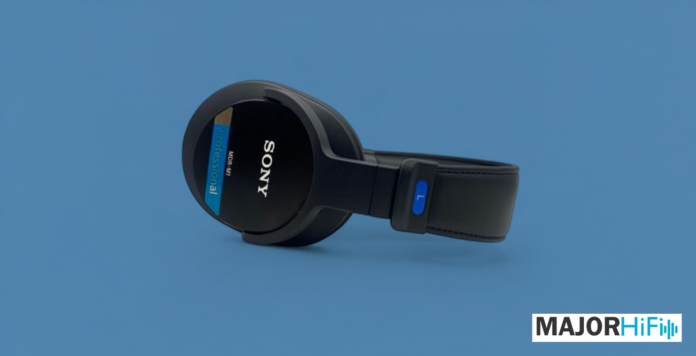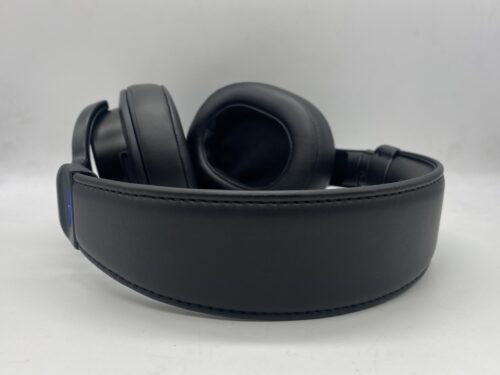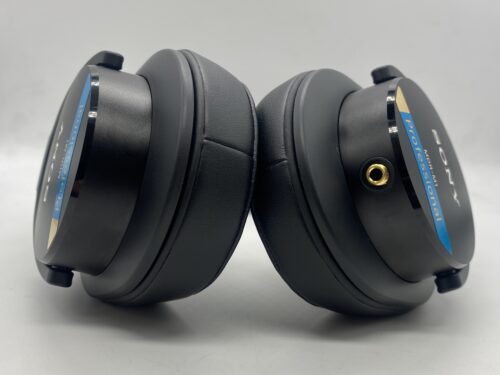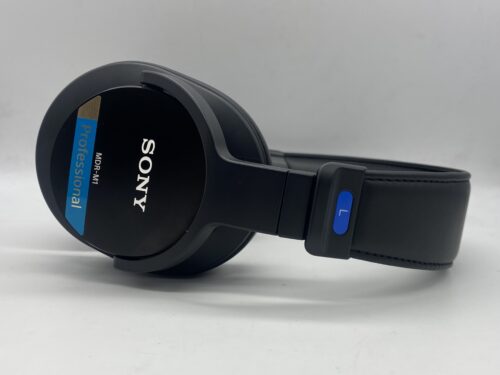For those familiar with Sony’s iconic MDR-7506 headphones, the MDR-M1 is a fresh, refined upgrade designed to meet the demands of modern listeners. While maintaining the essence of the 7506, the MDR-M1 introduces enhancements that go beyond sound alone. With a more robust build, updated comfort features, and improvements in both the sound profile and user-friendly design, Sony has crafted a model that takes professional monitoring to a new level. From a cleaner look to a re-engineered driver that dives deeper into the audio spectrum, the MDR-M1 presents itself as a compelling option for both audiophiles and critical listeners. Let’s explore what makes this an appealing choice for studio work and beyond.
What You Get
- Headphones cable (Approx. 1.2m/2.5m – Stereo mini plug)
- Plug adaptor (Stereo standard plug ↔ Stereo mini plug)
- Reference Guide Warranty Card
Look & Feel
The MDR-M1 looks a lot like the 7506 but with a few minor tweaks. I think of the M1 as a more cleaned-up version of the 7506, with a more solid frame and modern look. What makes the M1 easily worth an upgrade without even listening to the sound is its quality of life changes. The earpads and headband use new materials that make the M1 more comfortable and isolating. They also feel lighter and even fold flat for easier transportation. There’s also a new detachable cable with a locking mechanism, and that alone is worth the upgrade for me.
Design
Sony gives the MDR-M1 a newly designed 40mm dynamic driver with a neodymium magnet. They’ve re-tuned the driver to achieve a wider frequency response of 5 Hz – 80,000 Hz as well as a slightly lower impedance of 50 Ohms.
Soundstage
With a completely redesigned driver, what does the M1 bring to the table with its soundstage and spatial imaging capabilities? The 7506 was always a useful tool to use for judging accurate mixes, and the M1 is no different. It’s a closed-back presentation that was never going to be the widest or most dimensional sound, but those looking for a solid reference for most music will be satisfied. At times, the M1 breaks out of its shell with the right mix, showcasing excellent channel separation and localization. I find that the M1 still tends to pack its sound tightly in the middle, so I would classify it as being a bit picky. If you’re using the M1 primarily for mixing though, the soundstage and imaging are exactly where they need to be. It’s a linear response that makes sense of the stereo field and presents different instruments and effects with clear organization.
Low End
What immediately jumped out at me with the M1 was its expanded bass response. The M1 is able to dive much deeper than the 7506 seemed capable of. The sub-bass is much more prominent, occupying a larger surface area of the frequency response. It gives the bass a lot more layers, while still supplying tight grooves and punchy transients. The M1 makes it easier to assess the low end critically. While it’s not the most colorful or textured bass, a natural elegance establishes the M1’s reliable balance.
Mids
There’s no considerable drop in the midrange on the M1. It helps immensely with evening out the flat frequency response that makes these headphones a great studio tool. It may favor the low mids sometimes, but the M1 knows the part it plays. Instruments and vocals have a natural appearance in the mix, and while they don’t carry the most intrinsic micro-detail, they have an even gain which gives them all the clarity you need to get an accurate representation of tone. Casual listeners might be let down by its clinical flavor and lack of roominess, but it does its job for critical listeners looking for a natural, flat timbre.
Highs
If you were a 7506 user for many years, you might notice the taming of the highs on the M1. While the treble never reached Beyerdynamic DT 770 levels, the 7506 tended to be sibilant at times. With the M1, that sibilance is almost gone. You get a much smoother response here, and while you might have liked the more outward crispness of the treble, the M1 still features good high-end clarity. The highs feel a lot more controlled, making for a better reference that is easier to translate the reproduction of some instruments.
Summary
The Sony MDR-M1 effectively builds on the legacy of the MDR-7506 with thoughtful updates that cater to a new generation of audio professionals. While its design and comfort improvements make it a joy to use for extended sessions, the real magic lies in the sonic upgrades—like a more expanded bass and refined highs, offering a fuller yet balanced sound. For those seeking accuracy and reliability in monitoring, the MDR-M1 strikes an ideal balance between nostalgia and innovation. This pair of headphones feels like a worthy successor to the 7506, establishing itself as a new staple in the world of professional audio.
The Sony MDR-M1 is available at Audio46.
MAJORHIFI may receive commissions from retail offers.











